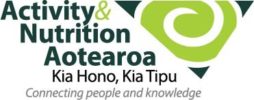28 Jan Why do thirsty people reach for sugary drinks?
In this third story in our four-part series on Wai Auckland, we discover what the Auckland Regional Public Health Service-led project has learned about consumers’ attitudes towards sugary drinks.
We’ve all been there. We’re out, we’re parched, we forgot (or didn’t think we’d need) our water bottle, and now we’re looking for a thirst-quenching drink. But what do we choose? And why?
In 2017, during Wai Auckland’s business case development, consumer research was undertaken to find out what drinks people chose when out and about.

Project manager Amanda Brien says that, promisingly, water was found to be the most common (44%) choice because it was healthier (30%), had no sugar (15%) and was cheap (14%).
“For those who didn’t choose water, taste was the main factor for the decision (59%), she says.
“But in 2019 we repeated the research and asked additional questions about sugary drinks, and this time fizzy beverages came out on top.”
Amanda says the results showed that 41 percent of people would choose fizzy drinks as their go-to option, compared with just 31 percent in 2017. Water came in at 39 percent.
“We did make a slight change to the methodology, the sample size was only 500 and there is no national data set to draw on, but it gave us some sense of what was happening.”
The research also asked respondents whether they’re influenced by nutrition information panels. About two-fifths (43%) read the information for cold drinks and more than half (54%) would make a purchase regardless. Interestingly, about two-fifths (44%) said they wouldn’t buy it after reading nutrition information and one-third (30%) would buy it less often.
Amanda says a clear majority (86%) felt manufacturers should display clear information about their drinks’ sugar content, and almost three-quarters (72%) thought the number of standard servings per bottle should be clearly labelled.
“Currently, there’s no standard serving size for sugary drinks in New Zealand and single servings can vary in volume from 200-750ml, and in sugar content by 40g! It’s not until products reach one litre in size that manufacturers recommend a single-serving of 250mL.”
When asked what they thought an appropriate single-serving size should be, more than two-thirds (70%) of the respondents agreed that 250-300ml was suitable for one person.
“The World Health Organization (WHO) recommends we consume a maximum of 50g of added sugars per day, or less than 30g for more health benefits,” Amanda says. But some drinks on the market already contain more than that in a single serve.”
Recent University of Auckland research has also shown that almost 80 percent of drinks in supermarkets are sugary, despite the beverage industry saying their product development and marketing is focussed on low-sugar options.
While Wai Auckland has attempted some advocacy work with industry to implement a standardised single-serving size, this has been unsuccessful so far.
If you’re interested in supporting Wai Auckland’s sugary drink advocacy efforts, please contact Amanda Brien, Wai Auckland Project Manager.

